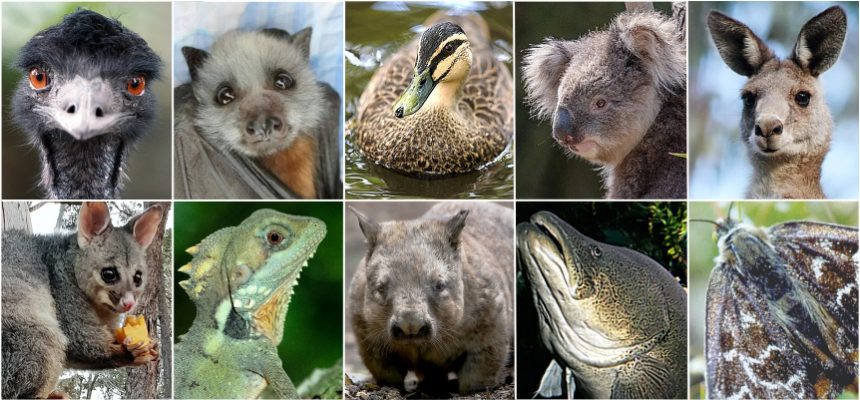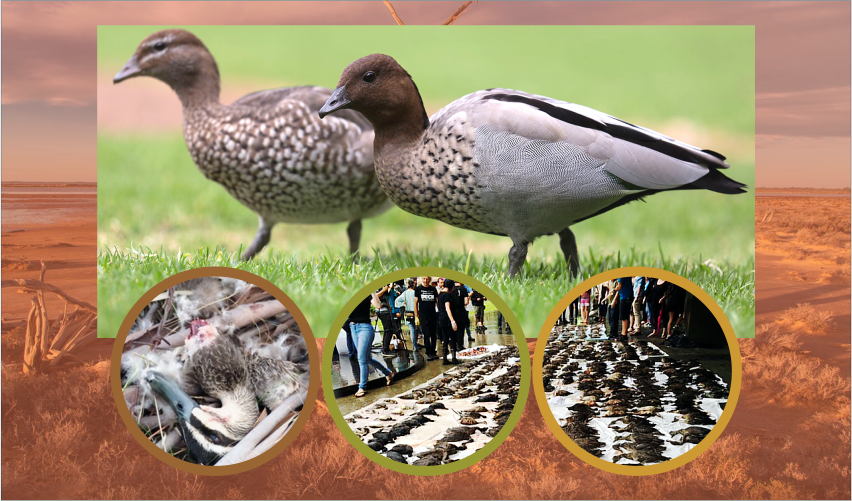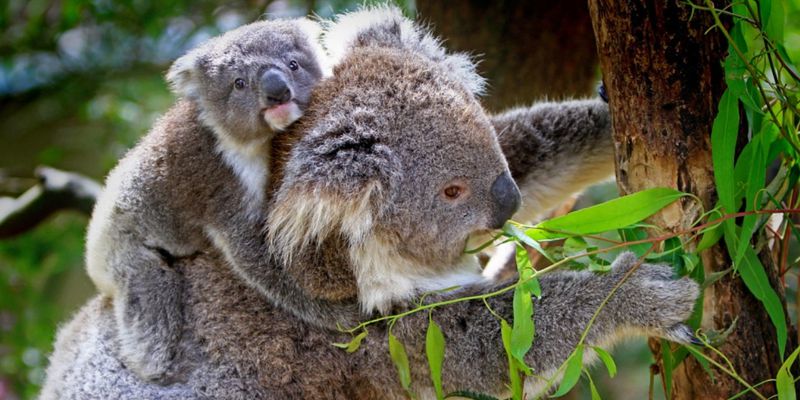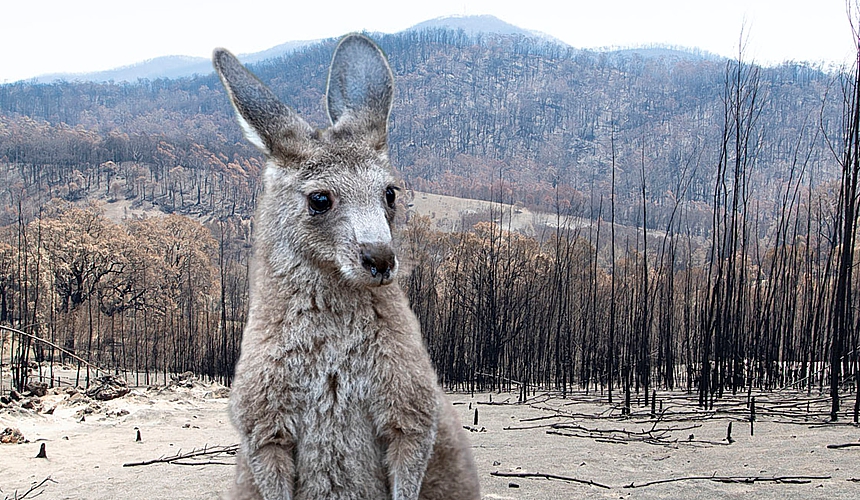BEYOND COMPREHENSION (from the AWPC President)

An update on Australia’s treatment of Kangaroos and Wallabies state-by-state
Dateline: August 2020.
I THOUGHT THAT in this message to you I would attempt to pick out a few of the numerous situations for wildlife across the continent that I am extremely concerned about, this time focusing on Kangaroos and Wallabies. Sadly these provide a pattern for the behaviour and conduct of governments in Australia that extend to other species as well.
ABOVE: There is some good news — Shai Ager and her colleagues (The Agile Project) are relocating Agile Wallabies in North Queensland. See more at end of article. (Image used with permission.)
The very difficult situation faced by Australia’s wildlife makes life very difficult for people as well. I want to thank everyone involved, the AWPC committee, its members and all the other groups, in Australia and overseas, that are working so hard to try to change the attitudes and behaviours that lead to so much cruelty towards, and endangerment of these very precious Australian species.
Frustratingly at this time I am in lockdown in inner Melbourne and that makes dealing with these issues many times more difficult than it would normally be. We prefer to be out there with the animals rather than shut away in the city.
I made the following point to Lily D’Ambrosio, Victoria’s Minster for the Environment, just this morning:
“We should all be very clear that COVID is not a cover for either ignoring the current circumstances (which are dire), or increasing attacks on, biodiversity and biomes in this state”.
Further to lockdown, face masks and wildlife
I want to make the following points about this, during the various lockdowns (Melbourne begins a night time curfew as of this evening) we have done what was asked of us, which goes without saying, and continued to work on our projects at home and online. The food has been delivered and we exist in relative safety.
We are where we are now because many in the community chose to ignore their responsibilities and duty-of-care to others. The breaches of restrictions in the place we live were evident as parties continued and social distancing protocols were ignored. What this has done is to place many of us in very great danger; the front line workers, particularly those in the health care sector, various government employees having to deal with this situation, essential retail staff and the list goes on. We thank them all. We are still much better off than many of our friends across the world, where food is scarce and the opportunity to isolate does not exist.
It is extremely important that everyone wears a face mask to reduce the risk of spreading the COVID-19 virus, the international data on the subject tells a very compelling story. Around the world masks are now everywhere. Many of these masks are single-use and we now see them washing up on the beach and discarded in the streets.
Japan, where mask use is commonplace, particularly when people are using public transport or shopping, produces 4 billion disposable face masks each year, most are used in Japan. So multiply that around the world and we are talking vast numbers of face masks being discarded each and every day. Every single mask, unless disposed of with care, is a deadly hazard for wildlife, both on land or in the sea.
 Kangaroos are not shoes
Kangaroos are not shoes
In California, where the virus also rages, our friends from the Centre for a Humane Economy release a new study as part of its Kangaroosarenotshoes campaign, which is now gaining attention around the world.
“We now learn the true death and displacement toll as a result of Australia’s catastrophic wildfires may be three billion animals, including uncounted kangaroos,” said Wayne Pacelle, president of the Center for a Humane Economy. “It’s now being called ‘one of the worst wildlife disasters in modern history’. Despite this crisis, commercial shooters are still massacring kangaroos, and their skins are still being sold in California despite a law that makes it a crime to trade in their parts.”
“Australia’s commercial kangaroo shootings, the world’s largest wildlife slaughter, is being further fuelled by vast violations of a ban on kangaroo body parts in the State of California, according to a new study by the Center for a Humane Economy, a US-based non-profit organization that promotes animal welfare in the business sector”.
Matters of concern post fire
“Nearly three billion animals — mammals, reptiles, birds, and frogs — were killed or displaced by Australia’s devastating 2019–20 bushfires”. WWF
You may recall that we spent almost two months travelling the fire grounds in NSW / the ACT and Victoria and did so around that devastating Christmas period of 2019–2020. That was trauma enough, but what shocked me to the core was that, despite the vast numbers of native animals killed during that time, and the large amounts of money flooding in to rescue and care for wildlife because of the fires, the killing of Kangaroos and other native Australian animals continued without mercy. Here are a few examples.
The killing of Kangaroos in the ACT
As you can imagine I receive a large number of communications from people around the world, including Australia, who are very concerned about what is happening to Australia’s wildlife — the killings in Canberra are not a good international image for this country and I can say that this negative perception has grown markedly and will continue to do so unless things change.
What follows is a quote regarding Mulligans Flat Nature Reserve in the ACT where shooting had just occurred:
“Never let it be said that driving heavy vehicles on soggy ground, then stepping all over the grass, plants and flora, gets in the way of killing Kangaroos”. Robyn Soxsmith (Animal Protectors Alliance) 23 June 2020
The threatened species, which the ACT Government says it is protecting through its mass Kangaroo killing programs, continue to disappear, even after all the Kangaroos have gone. After the removal of Kangaroos from grasslands, cattle appear (ecological grazing) on grassland reserves, hazard reduction burns are also conducted and the plans for Canberra’s expansion suggest another 100,000 homes are required. The science that drives the killing is dubious at best.
RELATED STORY:
They’re advised not to shoot Mums in Canberra, ACT — but they do, here’s how
To try to help the local effort to stop the killing, I had a long discussion with Greens MP, Shane Rattenbury, (among other portfolios he is the Minister for Climate Change and Sustainability). Shane has been a keen and long-term supporter of the killing. Shane believes the ACT’s science and quotes it over and over again despite what I described to him. So we went around in a big circle and the killing continues.
According to FOI information obtained, it looks like the ACT Government has spent something in the order of $3.321 million in the four years to 2019 on matters associated with killing Kangaroos.
It is very evident to me, and I am talking continent-wide here, that those protecting wildlife get nothing (particularly if they are protecting Kangaroos), while those killing and demeaning Australia’s wildlife are paid handsomely for their work. It is clear from the rapid endangerment of more and more species across the continent that all governments could have done a great deal better. The current results are a marker of performance.
South Australia and the killing of Kangaroos, adding Wallabies
I have challenged the South Australian Government on their plans to ‘prey switch’ by adding other species of Wallaby and Kangaroo to their ‘harvest list that legalises this abhorrent and cruel trade in wildlife. Additional species include the Kangaroo Island Tammar Wallaby (mainland species thought to have been extinct) and the Eastern Grey Kangaroo (until recently described by the South Australian Government as rare in the state). The later magically increasing in population while other species, because of severe drought and significant levels of killing, have experienced significant declines in already exaggerated population estimates.
“The SA Government estimates there are about 1.5 million red kangaroos in the state, followed by 1.3 million western grey kangaroos and 570,000 wallaroos, or euros. For red kangaroos, that is a fall of 39 per cent from the previous year and 4 per cent down on the average”. ABC July 2020
The response from the government in relation to my questions regarding the Eastern Grey Kangaroo was as follows:
“Kangaroo populations in the north of the state have declined since 2018 due to drought conditions that continue to effect these regions. The Eastern Grey Kangaroo has increased in distribution and abundance in the south east of SA over the last 10–15 years and no longer meets the requirements of a rare species under the National Parks and Wildlife Act 1972.”
Shockingly one response from the government, when I asked about the dangers inherent in this industry in relation to disease, including COVID and its evident presence in factories processing animals, simply stated that:
“Agricultural industries, which includes the commercial kangaroo industry, and related businesses across the food chain are considered an essential service and may operate as normal with consideration of social distancing and other restrictions”. SA Department of Environment and Water
Kangaroo Island that tourists love: also a target for kangaroo killing?
Given the scale of the fire tragedy on Kangaroo Island, which also received significant funding for wildlife rescue and rehabilitation from around the world (and the species on it were also a pre-wildfire target for expansion of the commercial trade in Kangaroos and Wallabies) required a question from me in relation to the population survey being conducted on the island and what the government calls a ‘harvest’. Here is the answer:
“The purpose of a kangaroo and wallaby survey on Kangaroo Island is to gather an island wide population estimate post-fire. This information will be used to inform decisions regarding a sustainable harvest on the island”. SA Department of Environment and Water
In Victoria (as of 3 August 2020) the case of the Lilydale Kangaroos, is yet another stranding, despite the government’s promises that this would not be allowed to happen again. The lives of these animals, they were due to be killed in the next few days as I write, hung in the balance. Along with strong submissions from neighbouring residents and other wildlife defender groups I wrote to the Victoria’s Environment Minister:
“I understand that DELWP are using the excuse that Kangaroos cannot be rescued successfully as 40 percent will die when relocated. As I have said over and over and over again in my many communications to the Victorian Government and in my many writings and articles on the subject, this assertion is a falsehood. And by ignoring the evidence and circumstances we face today, the Victorian Government ignores the endless and immense suffering these animals experience (not to mention the sentient humans that live in this state) caused by the actions of the Victorian Government and its archaic attitudes. And in continuing with the same old nonsense, ignoring the extraordinary loss of wildlife, not only from the persecution of numerous native species by the government (Labor is at least twice as bad as what proceeded it — which was terrible) but also from the wildfires. The latter, can be described as the greatest single catastrophe for Australian wildlife in thousands of years.”
We can only hope, particularly given the disastrous COVID situation in Victoria, that theses animals, a small number, get a reprieve and the government shows some common sense and compassion, rather than allowing the killing of wildlife to continue while the rest of us are told to stay at home.
Now we move to Melbourne’s North and the peri-urban local government area of Nillumbik. I had a strong sense that the Victorian Government’s environment department (DELWP) was trying to open up Melbourne’s peri-urban local government areas (where Kangaroos still exist) to commercial shooters. This is because Kangaroo populations in the rural parts of the state have been decimated as is evident by the figures now showing up on government reports. I hope that the significant concern from a lot of people that this might be the plan, has kept this terrible plan at bay for now. We do however all need to keep an eye on the situation.
The killing of Kangaroos in some regions of Victoria has been significant, and that includes the area around the settlement of Dunkeld in that state’s west where shocking scenes of butchering are described by the town’s residents and business people.
“We could hear shooting very close by and could see the vehicles moving around 178 Victoria Valley Road. We were terrified for, not only our lives, but our neighbours as well. The Police did not attend; we went outside to see what was happening. We called the Hamilton Police directly, but they again refused to come out, claiming that the shooter had a permit”. Jane Gibb, Dunkeld
Queensland
Here, there is a well-deserved victory for wildlife. Our congratulations to Shai Ager and her colleagues for the hard won success. The battle has been with the Queensland Government, its Environment Department attempting to block rescue efforts of these beautiful and diminutive animals, and in doing so enabling the cruel death of many animals as they have been vandalised and poisoned.











